Who are the best Managed Cybersecurity Service Providers?
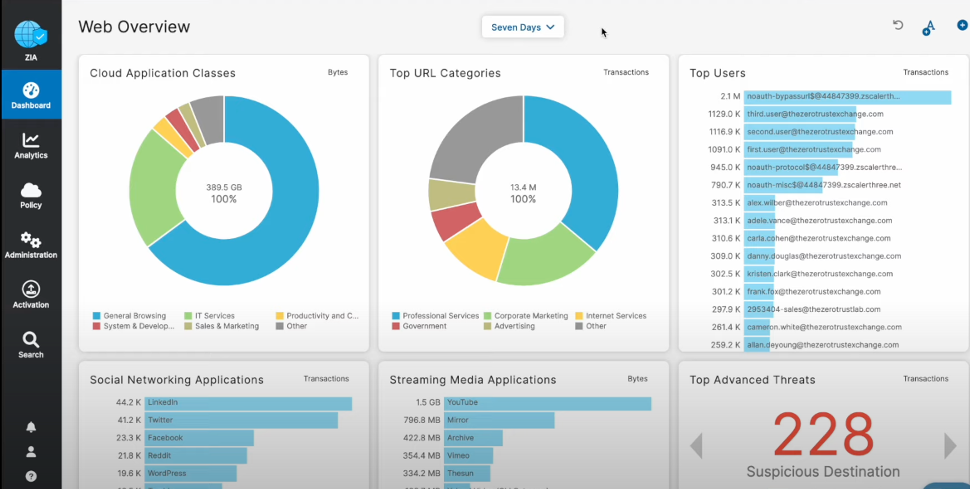
The cybersecurity landscape is vast and evolving rapidly. This leads to a marketplace filled with products from cybersecurity services companies designed to provide specific solutions for different problems which enterprise verticals may encounter. For instance, a multinational premium video streaming service has a lot of attack surface exposed to the web and therefore needs more of a website-centric approach focused on security controls for relevant threats like account takeover or DDoS attacks.
A hardware manufacturer with thousands of employees may have a very small internet-facing attack surface, but they have employees with internal access to proprietary business information which can be threatened by e-mail compromise or malware infection - therefore, they need to focus on access management, e-mail security, and endpoint protection. Different still, a company with hundreds of thousands of remote employees using personal devices to access corporate resources will need a comprehensive solution combining security controls like ZTNA, MDR, XDR, CASB, SWG and FWaaS.
So, whether the solution being sought needs to solve financial transaction security issues with blockchain solutions, to prevent data loss or by ensuring that the data being stored or processed internally stays internal, there are viable technology solutions to fit almost any requirement. For the modern CISO, the key to shopping for such solutions is to find either a comprehensive solution or a blend of products that solves their specific business problems amongst the ever-growing number of cybersecurity offerings available on the market. With the rise of cloud computing it is increasingly important to find the right solutions from the top cloud security companies and cloud based cyber security companies.
What are 10 questions to ask your cybersecurity vendor?
- Do you offer a comprehensive SASE solution or a point solution to a specific security problem. We want to know if the vendor is attempting to provide an end-to-end solution or an ancillary or additional set of tools to add to an existing suite of tools.
- Do you focus more on innovation of new features or on enhancement of existing features? We want to know what’s important to the company so we can align their values with ours.
- Who is your target audience? We want to know if they are experienced in serving industries similar to ours, and if they are cloud first or on-premise solution vendors, –or even offering all deployment types.
- What is the pricing model? We need to know the parts and pieces required to build a solution and estimate the costs that will be incurred.
- What services are offered Virtual SOC, policy management, professional services, elite support, or is it "do-it-yourself"? When we find ourselves needing help, we’d like to know if we can turn to our vendor.
- Is the solution software only or is it available in appliances or virtual appliances? We want to know if we can manage this solution ourselves or if we need the vendor to manage the solution for us.
- Do you offer contextual threat detection and analysis (either human or AI) or are you using signature-based (or both) detection methods? We want insight into how ‘smart’ they are when detecting threats.
- Do you support all endpoints, clouds, and operating systems? We want to know if there are limitations with devices or operating systems which we have in our environment.
- Do you have interactive online documentation and self-help portals? We want to know if we will have to call support every time we have a question or if there is a community with knowledge base articles and FAQs where we can go first to save time.
- What kind of integrations are available for this solution? This question will give insight into how existing customers use the solution in their security stack, and whether development resources will be required to fit into our stack.
Zscaler Cybersecurity Solution
Zscaler is a cloud-native solution focused on ease-of-use, minimal customer resource requirements, and providing a reliable and scalable solution covering a large geographic landscape with 150+ data centres around the world. They provide reliable and fast managed backbone connectivity and managed services including Secure Web Gateway (SWG), Security Service Edge (SSE), Private Access to replace VPN infrastructure and Internet Access which both improves performance and ensures consistent application of security controls for remote users anywhere on the internet. The Zscaler “direct-to-cloud” approach ensures a scalable implementation with no infrastructure that’s relatively quick and painless to implement. The Zscaler portfolio also includes the Zscaler Digital Experience (ZDX), a suite of performance monitoring and analytics tools that empowers IT teams with visibility and insight into every user, endpoint, application and network hop.
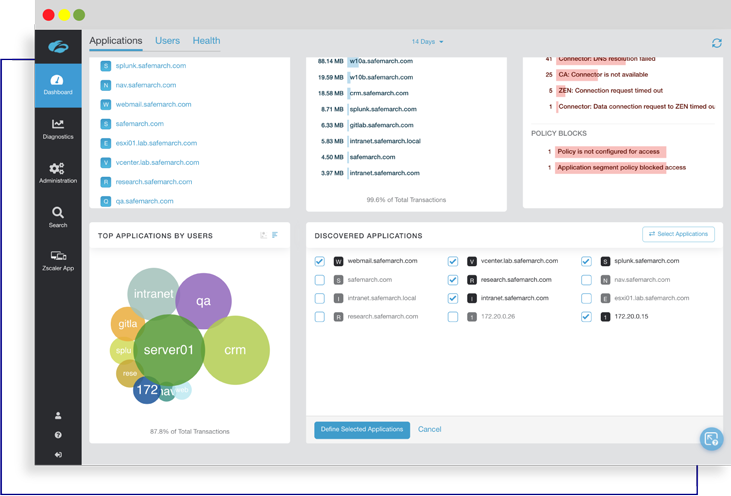
Netify Cybersecurity Rating: 3.5/5
Palo Alto Prisma Access Cybersecurity Solution
Prisma Access is a cloud security solution that securely connects users at headquarters, office branches, and remote users on the road to the internet, cloud and applications without legacy VPN infrastructure. For organisations with existing Palo Alto firewalls appliances or virtual machines under management by a Panorama deployment, the Prisma Access app can be managed by Panorama as well. Organisations that want industry leading features from a leading security vendor, as well as a diverse mix of on-premises and SaaS offerings will find Palo Alto’s Prisma Access solution appealing. It offers the full gamut of SASE features from CASB, CIE, SWG, mobile support, service connections and integrations into other Palo Alto solutions. As with other Palo Alto solutions, logging and reporting features are powerful, providing clear visibility into user activity and comprehensive views into mobile users’ activities.
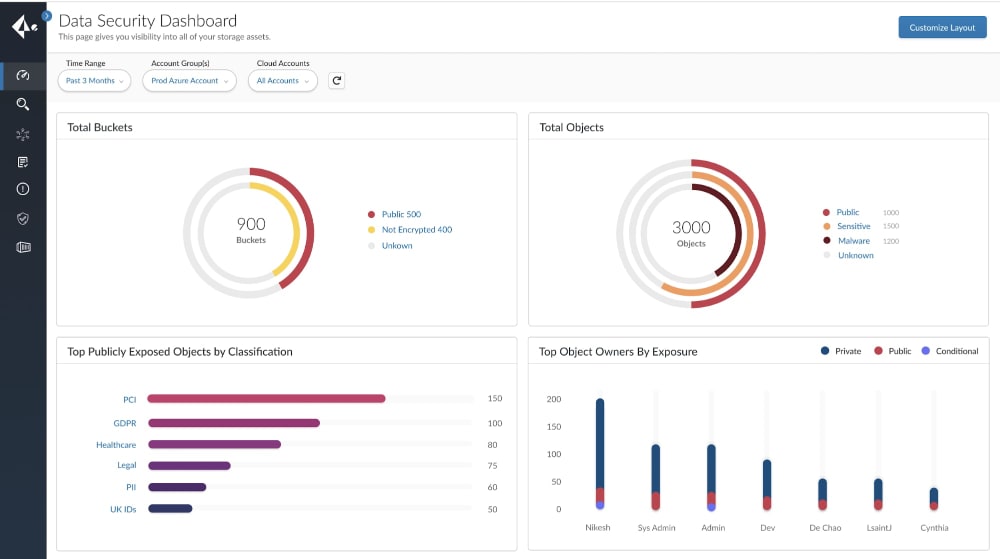
Netify Cybersecurity Rating: 4.5/5
Cisco Umbrella Cybersecurity Solution
Cisco Umbrella is a cloud-delivered DNS security solution. Umbrella began as a DNS filtering provider but has grown into a single-service solution comprising of DNS-layer security, SWG, FWaaS, and CASB functionality. While Umbrella is not a comprehensive SASE solution on its own, it is a great addition to any organisation’s security stack. If you’ve got one of Cisco’s SD-WAN solutions already in place, you can benefit from easy and tight integration. Umbrella’s service includes cloud security features for devices, users and apps which are either on or off network. Cisco Umbrella, when combined with other Cisco SecureX solutions, provides increased visibility and threat management from a single environment with the ability to automate many of the otherwise-manual steps required for security operations activities from hunting through to remediation. SecureX takes in data directly from Umbrella as well other Cisco products and third-party sources for analysis, reporting, and monitoring.
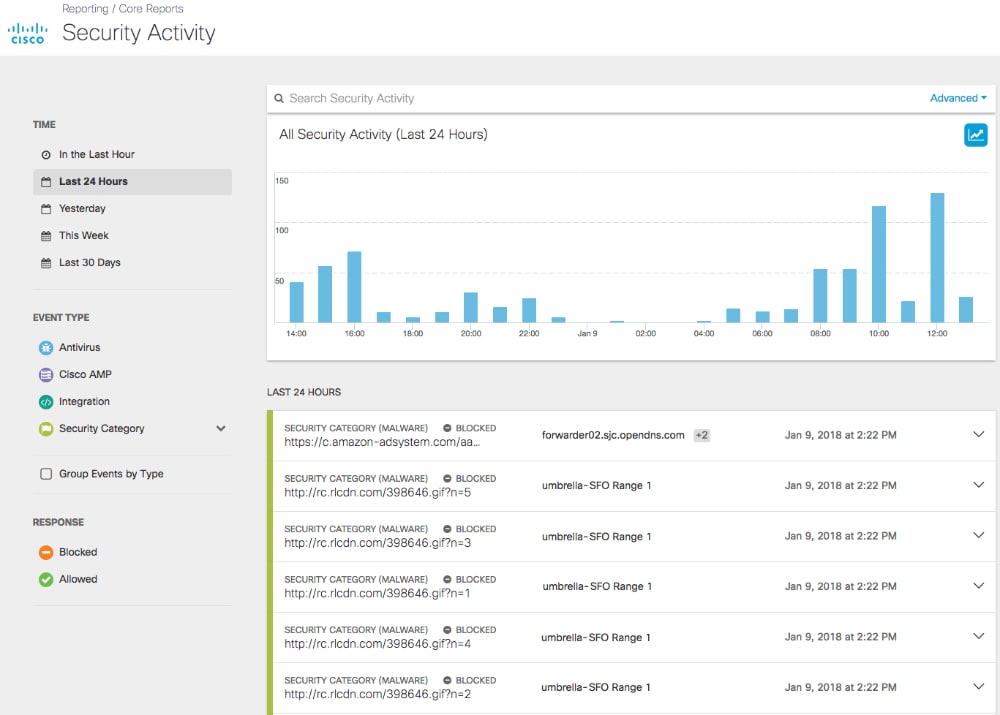
Netify Cybersecurity Rating: 2.5/5
Darktrace Cybersecurity Solution
Darktrace is a bleeding-edge AI based solution that boasts deployments completed in minutes. Their solution is centred on self-learning AI that learns normal behaviour and detects abnormal behaviour in cloud environments, SaaS applications, email, collaboration and team tools as well as endpoints (with endpoint security integrations). Darktrace can autonomously respond to threats detected in critical infrastructure and industrial automation environments as well as IoT networks and OT networks alike. This cloud-based solution enriches existing security measures for those organisations looking to add layers to their defences, or looking for the most innovative protection on the market. Additionally, logging and reporting features are very intuitive and provide deep insight into user, application, and endpoint behaviour.
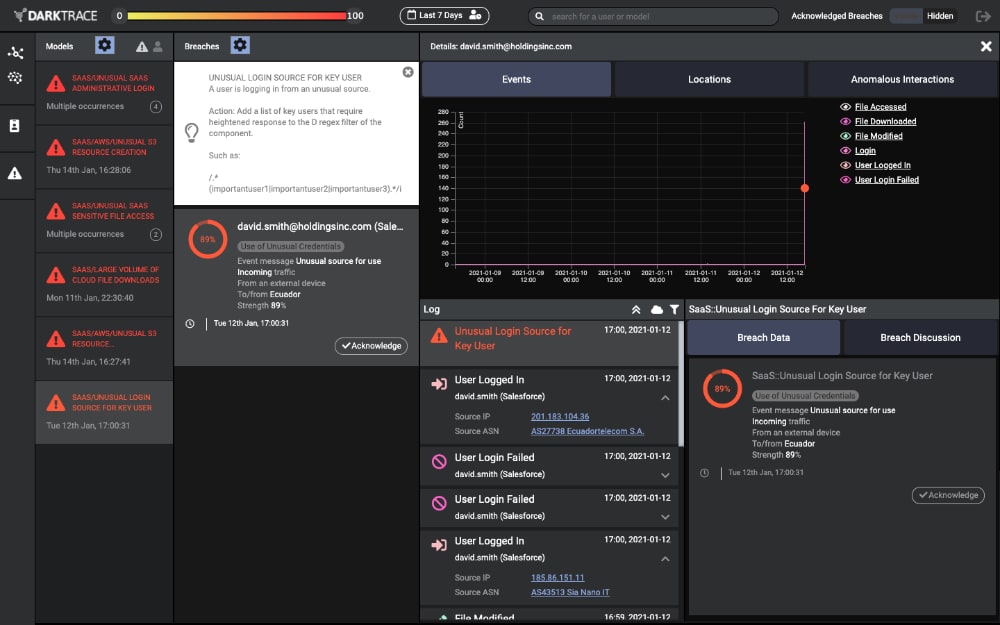
Netify Cybersecurity Rating: 3/5
Fortinet Cybersecurity Solution
Fortinet aims to provide a complete end-to-end network security solution with features ranging from VPN and on-premise firewalls to Zero Trust Network Access features for cloud environments. The Fortinet VPN is known to be higher-performing alternatives who leverage other open VPN standards, and it does provide more granular control of user-actions as well as deeper insight into user behaviour than traditional VPN solutions. While many still consider their VPN solution to be a ‘legacy VPN solution’, this approach is a good jumping off point for those organisations that are gradually moving toward zero-trust and away from the traditional cybersecurity approaches. Large organisations with complex networks and security stacks will benefit from FortiOS’s interoperability and integration capabilities allowing on-site, hybrid, or software-as-a-service deployments to enable control and insight across their entire network attack surface. FortiOS and Fortinet’s extremely broad portfolio of solutions can bring network security all together in one place for those who embrace their offerings end-to-end. Fortinet also offers products called FortiSIEM and FortiAnalyzer to enable log collection and analysis from both Fortinet and third-party network security products. FortiSIEM and FortiAnalyzer also provide a web-based interface that allows analysts to correlate security events and threats, as well as relatively simple drill-down into underlying event data and customised reporting.
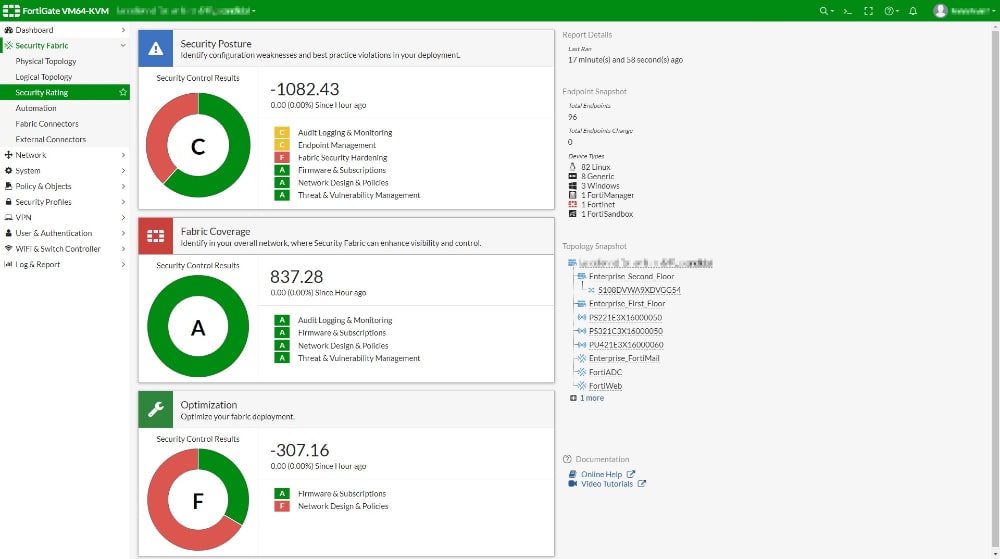
Netify Cybersecurity Rating: 4/5
Check Point Cybersecurity Solution
Check Point offers a full range of products and services including network, cloud, identity, and application access security solutions that are ideal for organisations with budget and a need for 24/7 advanced threat monitoring in a Security Operations Center (SOC). Like Fortinet, Check Point provides an end-to-end security solution for on-premise infrastructure or cloud environments, although their product’s level of sophistication (and cost) is more similar to Palo Alto. An organisation with the right talent can maintain a robust network security defence by leveraging Check Point solutions. In addition to leading the industry in traditional firewalls, IDS/IPS functionality, and threat detection, they also offer visibility into Internet of Things (IoT) devices and can analyse over 1500 protocols. Check Point provides a very advanced threat monitoring and cybersecurity solution that takes an organisation's security to the next level with real-time monitoring capabilities, AI-driven analytics, powerful reporting features, and solid integration with leading SIEM solutions.
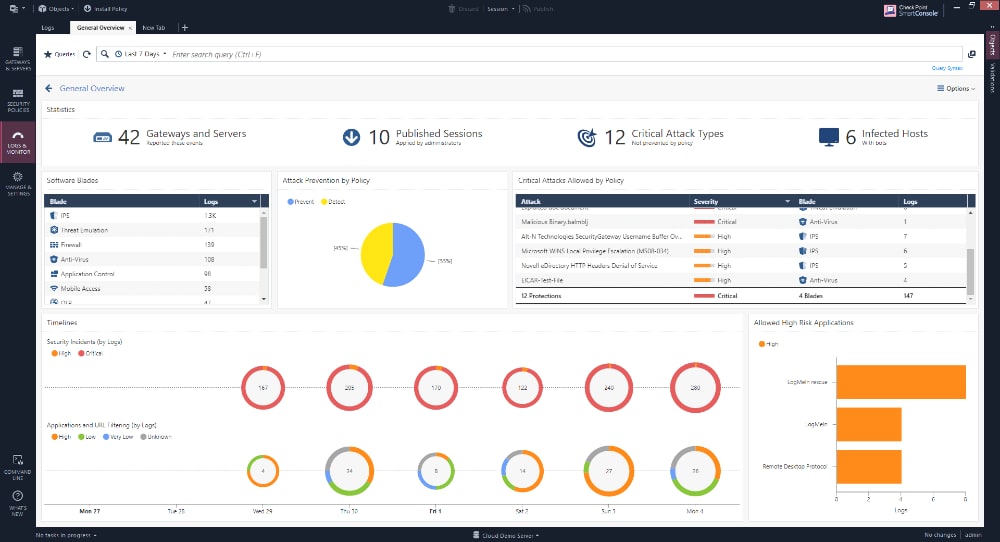
Netify Cybersecurity Rating: 4.5/5
ExtraHop Cybersecurity Solution
ExtraHop has a unique offering as an industry leader who focuses solely on network detection and response (NDR). Organisations concerned with Advanced Persistent Threats (APT) looking for a cloud-native security solution would benefit from ExtraHop’s NDR capabilities. Their solution is distinguished with its ability to detect adversaries on the network using Network Detection and Response in advance as well as post-compromise. ExtraHop is aimed at helping organisations gain complete network visibility and control across cloud, datacenter and IoT networks, and it delivers its services entirely as a cloud-based SaaS solution. ExtraHop also provides forensic analysis capabilities for all network traffic to ensure the integrity of the organisation's data, devices, users and network. ExtraHop’s logging and reporting capabilities are known to be top-notch, with an intuitive interface allowing users to see not only where threats are across their network environment, but also where they have been.
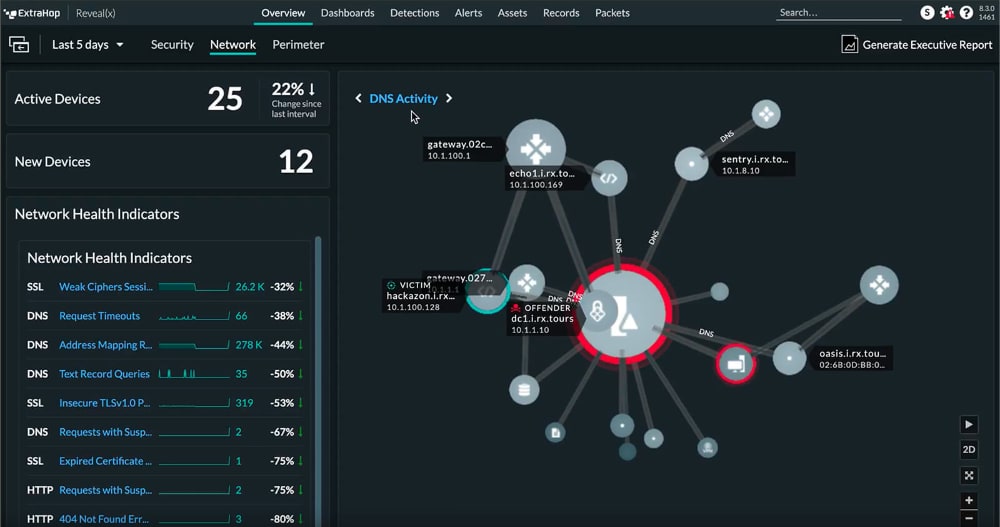
Netify Cybersecurity Rating: 3/5
FireEye Cybersecurity Solution
While FireEye may be best known for their industry-leading threat intelligence and SIEM solution, they offer a thorough and comprehensive portfolio of cybersecurity solutions with endpoint protection, intelligent threat detection, automated response, case management, cloud security, email security, and more. Their powerful suite of products that can be combined for an organisation to enable visibility into their network, data, users and email in one place with command and control over their landscape of security tools. While a healthy budget is often a prerequisite, organisations looking to bring all of their tools into one place and defend all of their attack surfaces using best-in-class threat intelligence will be drawn to FireEye’s products, which are complemented by their world-class knowledge and expertise.
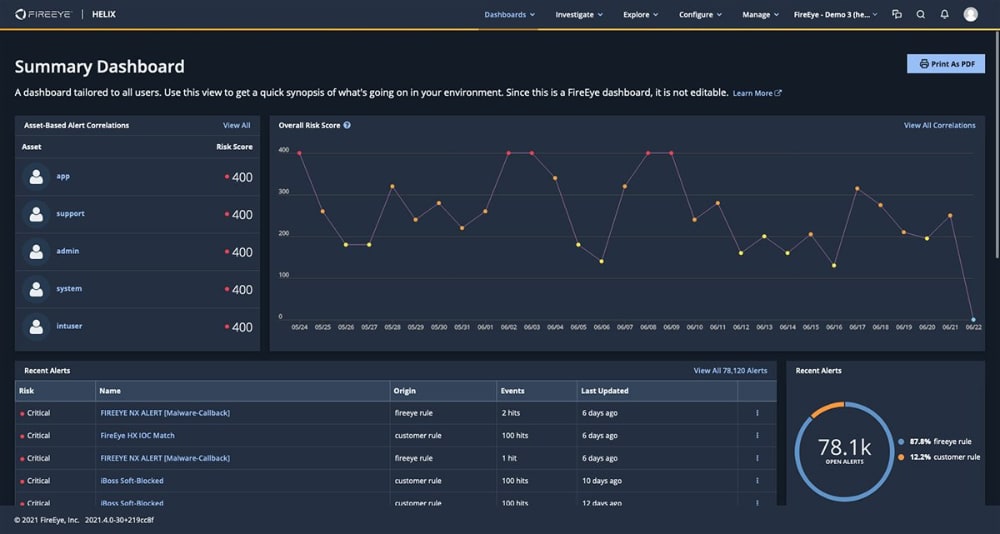
Netify Cybersecurity Rating: 5/5
Cloudflare Cybersecurity Solution
Cloudflare offers a wide range of cloud-based security services and products that make them one of the most comprehensive SASE solutions available. Those looking for a solution that covers all the bases, including ZTNA, DDoS, DLP, SWG, endpoint protection (through integrations with leading endpoint security providers) and DevSecOps solutions will want to look at Cloudflare’s offerings. While much of their portfolio has a do-it-yourself approach that caters toward DevOps organisations, they have extensive APIs and existing integrations to services and applications across the entire cybersecurity ecosystem. Their reporting and analytics capabilities are top-tier, although many of them come at an additional premium which needs to be purchased in addition to other products and services. They offer robust solutions for private network and internet access in all forms, including on-premise, cloud, or direct access to SaaS applications without VPN. Enterprises in need of a vendor that offers everything securely, reliably and with blazing speed will see Cloudflare as a formidable contender in the cybersecurity marketplace.
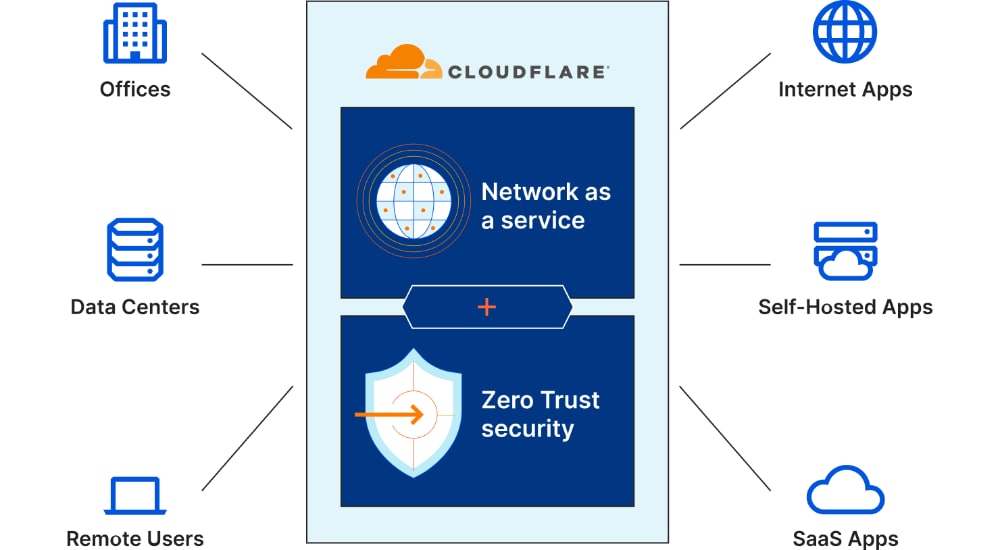
Netify Cybersecurity Rating: 3.5/5
Forcepoint Cybersecurity Solution
Forcepoint is a leading vendor with a focus on user behaviour and data security. They offer cloud security services including CASB, SWG, and cutting edge next-generation firewalls available on-premise or in the cloud. Forcepoint’s Data Loss Prevention (DLP) capabilities are at the core of their platform. Organisations with insider-threat concerns will get very high detection rates with few false-positives based on user behaviour and data usage analytics. They provide global scalability with centralised management and a zero-trust approach to SD-WAN. Their solution can be implemented as managed or unmanaged, and as fully-cloud or hybrid. Reports can be generated with their custom report building tools, offering granular insight into traffic analysis and threat detection.
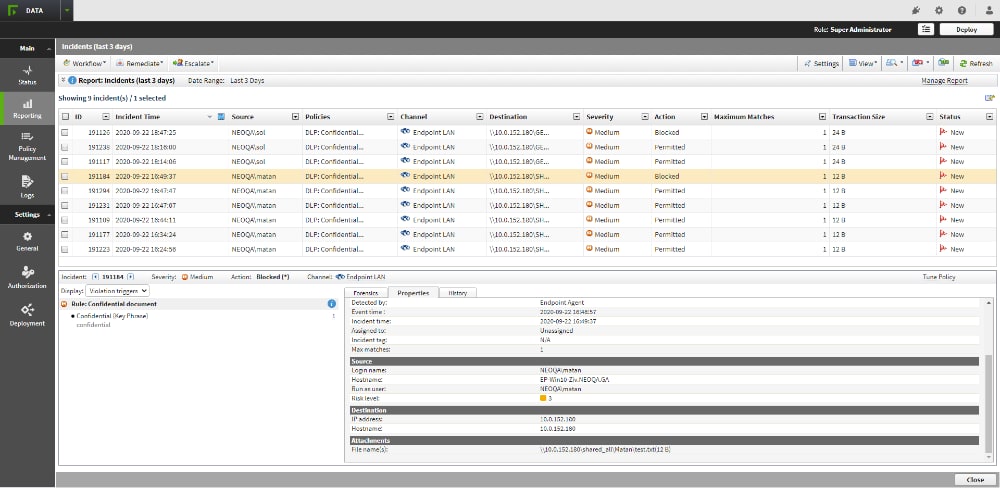
Netify Cybersecurity Rating: 4/5
McAfee Cybersecurity Solution
McAfee is almost a household name in cybersecurity from their days as a leading antivirus vendor. Today, they offer organisations of any size a full range of cybersecurity products and solutions. Their enterprise product suite includes cloud security, endpoint protection, centralised management, DLP, NDR, email security, cloud workload security, database security, analytics and SIEM. McAfee is a one-stop-shop offering do-it-yourself solutions based in cloud, on-premises or hybrid. Organisations with complex deployments and diverse needs across departments will benefit from the breadth of solutions offered by McAfee.Their reporting and analytics features across product lines are excellent and they offer their own SIEM solutions as well as integration to third-party SIEMs.
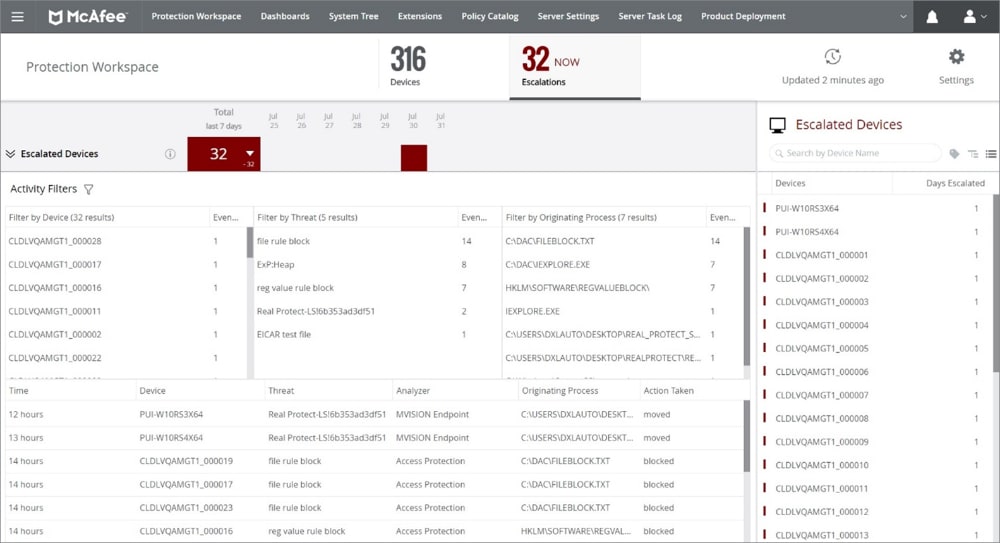
Netify Cybersecurity Rating: 4.5/5
iBoss Cybersecurity Solution
iBoss is a cloud security platform that some know for its on-demand or scheduled PDF reports which contain analytics-based insights and interactive drill-down into report data. iBoss is a do-it-yourself solution that can scale to any number of users, and they claim to have the best threat detection in the industry. Their focus is on connecting any user to any application no matter where they are located, without legacy VPN infrastructure. They offer insider threat detection, endpoint protection, remote browser isolation, CASB, SASE, and firewalls. Among other integrations, they integrate directly with FireEye’s cloud security solutions for enhanced protection.
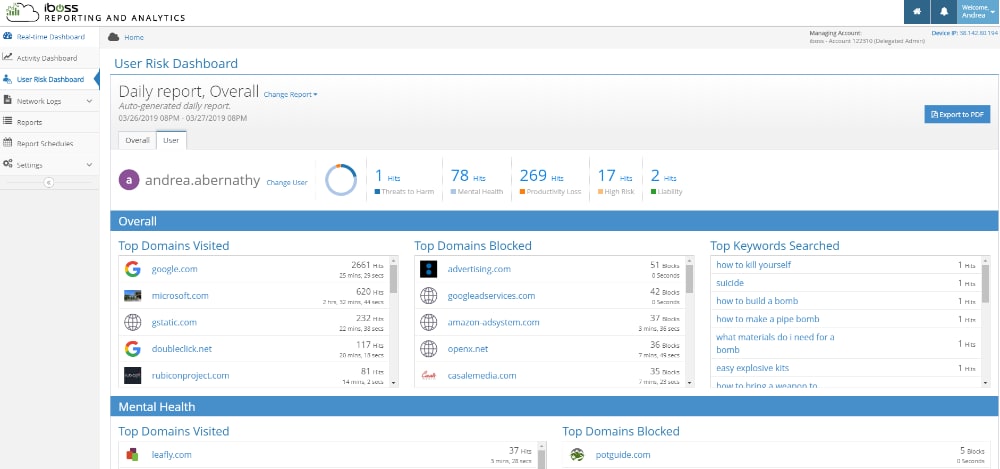
Netify Cybersecurity Rating: 3.5/5
Cato Networks Cybersecurity Solution
Cato Networks offers fully managed services and a fully cloud-based security platform which make deployment and scaling a breeze. Organisations without a SOC, minimal IT resources, or no IT departments may be a good fit for Cato Networks’ offerings. The Cato Networks approach allows quick and reliable deployment across endpoints with completely managed services or co-managed services for those organisations with an internal team at their disposal. They offer clients a ZTNA solution, providing access to organisational resources for laptops, tablets, and smartphones or elsewhere using their clientless browser interface. Cato Networks’ private backbone offers optimised application access and reliability as it maximises throughput and analyses all traffic. Their cloud-based management capabilities also provide end-users with the ability to manage and control the entire service themselves. Real-time analytics and deep visibility in the management application is well above average when compared to other cloud-based security platforms and SD-WAN solutions, with great visualisations and drill-down on reports.
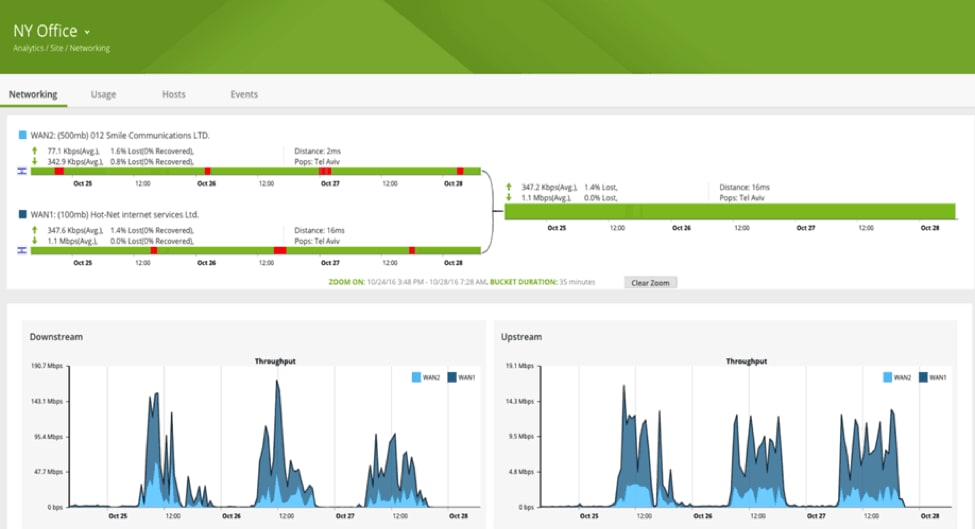
Netify Cybersecurity Rating: 3.5/5
Netskope Cybersecurity Solution
Organisations looking for a subset of SASE which includes CASB, FWaaS, Web Proxy, and ZTNA will find the Netskope platform a great addition to their cybersecurity arsenal. It will provide top-tier protection for their multi-cloud environments. This is an easy-to-use and deploy solution that organisations who are cloud-native will find very beneficial in their security stack. Netskope works with managed and unmanaged cloud applications, and offers many deployment options for public and private clouds. The main focus of Netskope at this early stage in their roadmap is to provide fast, data-centric cloud and network security. Organisations looking for the right balance between speed and protection, and who don’t mind looking into a relatively new player in the space, will be intrigued by Netskope’s features and benefits.
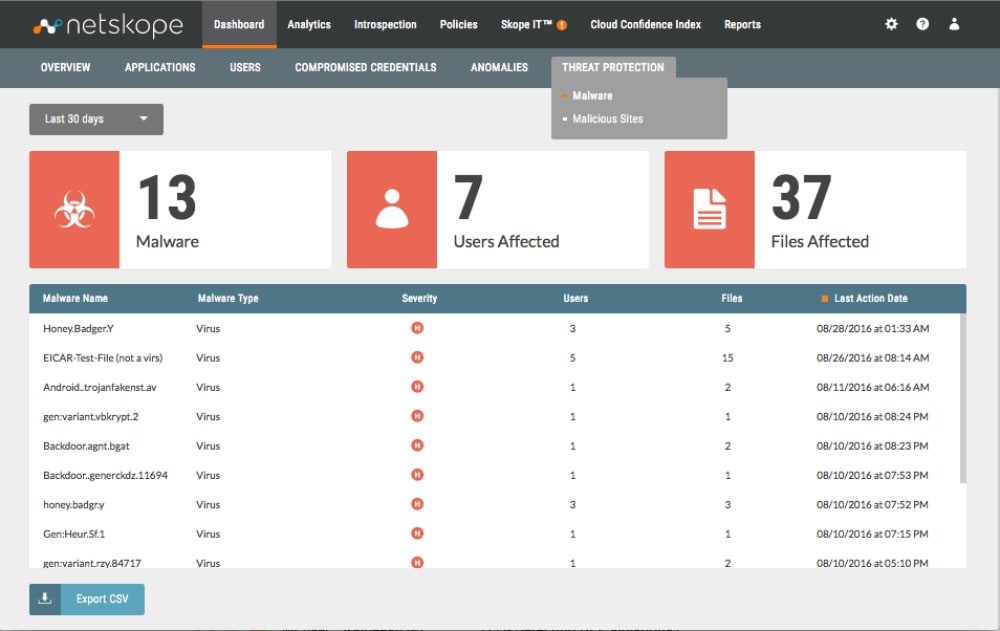
Image Source: Cybersecurity-excellence-awards, (2016)
Netify Cybersecurity Rating: 3/5
Proofpoint Cybersecurity Solution
Proofpoint is well-known for their e-mail security solutions, although they also offer a portfolio of cloud-based web, cloud and data security solutions. Organisations looking for data loss protection features in their CASB and advanced web threat protection will find Proofpoint a solution to consider. Proofpoint offers deep visibility into threats to e-mail security as well as cloud infrastructure, and their web security solution offers seamless browser isolation, sandboxing, and automated analysis of all web traffic.
Proofpoint’s cloud-based services allow organisations to deploy quickly and apply rules granularly and efficiently. This is a good addition to any organisations security stack, especially when e-mail security or web browsing security are high priorities.
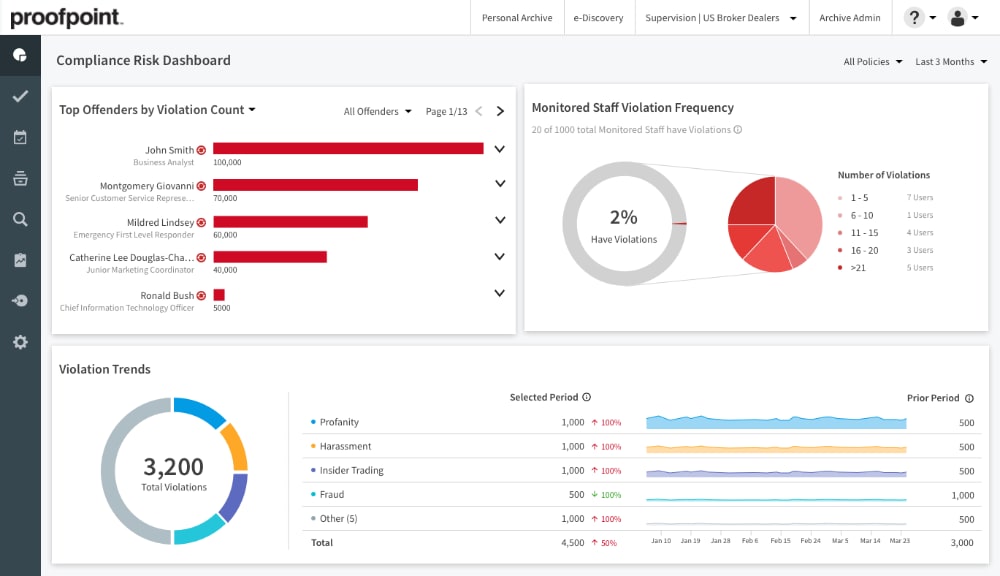
Netify Cybersecurity Rating: 3/5
Barracuda Cybersecurity Solution
Barracuda is another name that’s been around for along time, while they may be best known for their on-premise e-mail security solutions, they now offer end-to-end cloud-based protection from email threats. Organisations looking for a simple but effective solution to e-mail and cloud productivity application security threats that is cost-effective will benefit from Barracuda’s offerings. In addition to their e-mail security offerings, they offer a cloud-to-cloud backup product and an advanced Web Application Firewall with DDoS protection to prevent internet-facing web properties, APIs, and mobile applications against threats ranging from OWASP Top 10 to zero-days. Finally, while once a fully on-premise solution, Barracuda’s solution is now fully cloud-managed and extensive reporting and analytic features provide visibility into threats detected by their firewalls and e-mail security services.
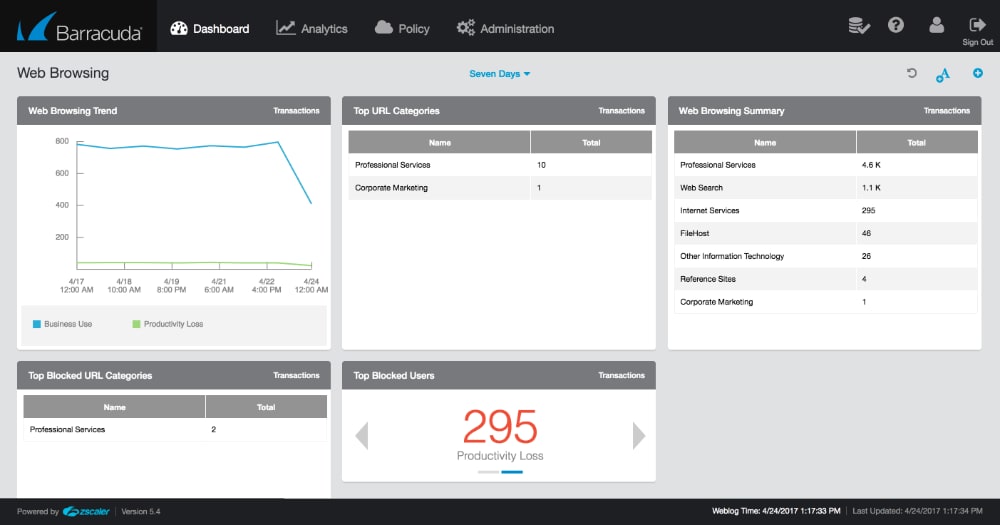
Netify Cybersecurity Rating: 2.5/5
Menlo Security Cybersecurity Solution
Organisations looking for a simplified approach to secure web gateways and proxies will like what Menlo Security has to offer. Their platform covers key components of the SASE architecture with SWG, DLP, CASB, iSOC, remote browser isolation, FWaaS and an “Elastic Edge” which delivers unlimited scalability and near 100% availability. Their focus is on isolating threats before they are unleashed through visibility of all web traffic and a unique browser isolation feature with complete logging and reporting. Menlo also offers a plethora of integrations with products across the broader cybersecurity ecosystem and several SOC platforms. Organisations of all sizes looking to implement a complete cloud security platform from a vendor who knows how to secure web browsing on a large scale will want to consider Menlo Security.
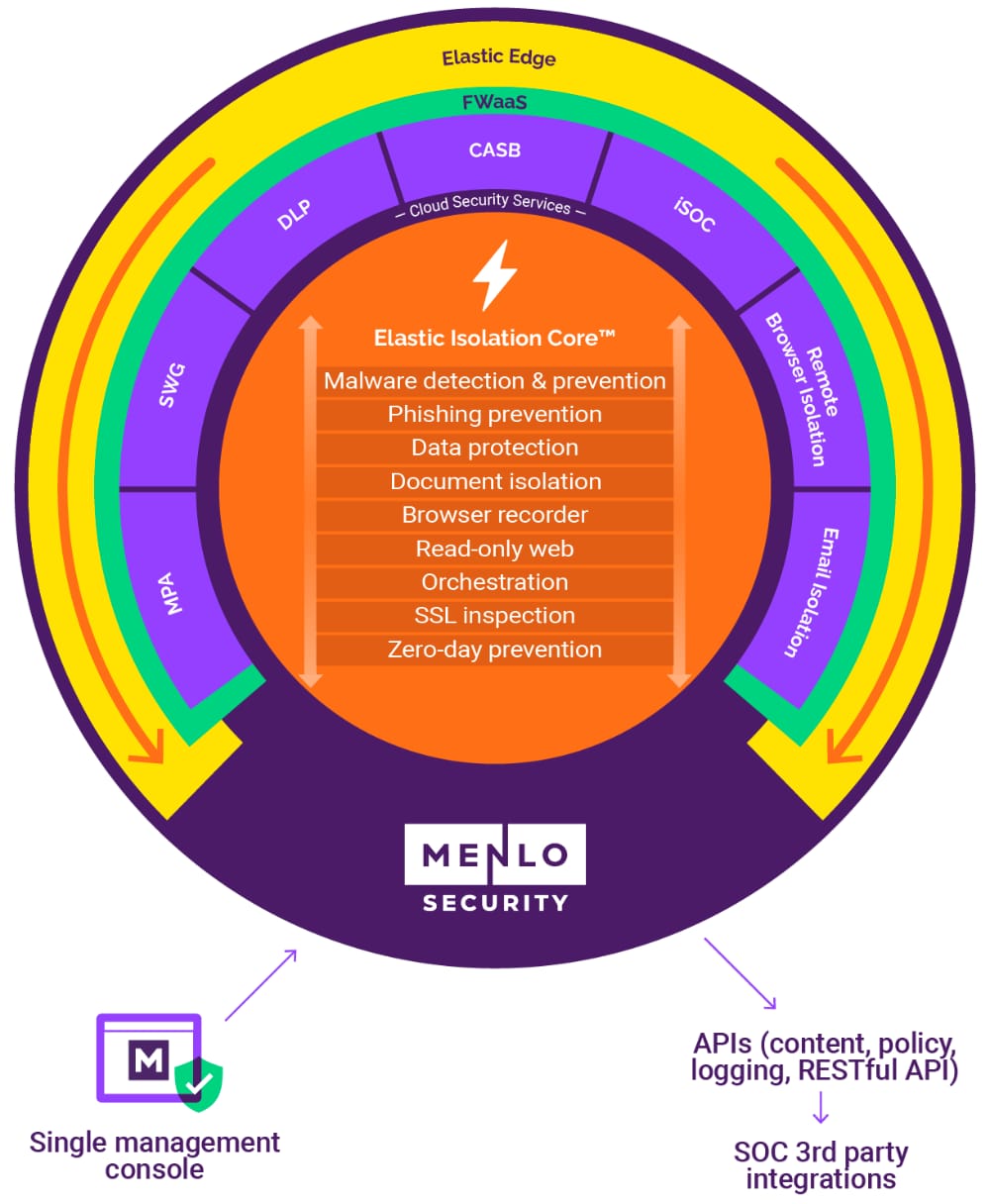
Netify Cybersecurity Rating: 3.5/5
Microsoft Cybersecurity Solution
Microsoft may offer the most complete solution to cybersecurity, especially for organisations who are already utilising Microsoft 365 and Azure. With its endpoint security solution (Defender) built-in (as native as it gets!) to the most widely deployed desktop operating system in business environments and billions spent annually on security operations, it’s hard to beat. And, organisations who utilise Google Workspace as their productivity suite, or organisations who have large populations of Linux or Apple users can still benefit from Microsoft’s security solutions.
With this in mind, Microsoft’s vast portfolio of security offerings can definitely make it complex to find the right parts and pieces necessary for an individual organisation’s needs. Microsoft takes a do-it-yourself approach in the deployment of their security solutions, which are primarily sold through Microsoft Cloud Solution Provider partners. Organisations looking for a leading solution in endpoint protection and management, CASB, DLP and information archiving natively integrated with Microsoft 365 should consider Microsoft as a potential provider of comprehensive cybersecurity solutions. Additionally, Microsoft’s Azure Sentinel SIEM, analytics, reporting tools, and marketplace full of integrations are some of the best in the industry Not to mention, their cloud-based security solutions are used for national security in many governments around the world, including the United States and United Kingdom. Their constant innovation and research is unmatched and their approach to cybersecurity, in general, is forward thinking.
Microsoft’s portfolio truly has a security solution for almost any cybersecurity need, although it can be argued that their benefits are most easily realised by organisations who are already Microsoft 365 or Azure users.
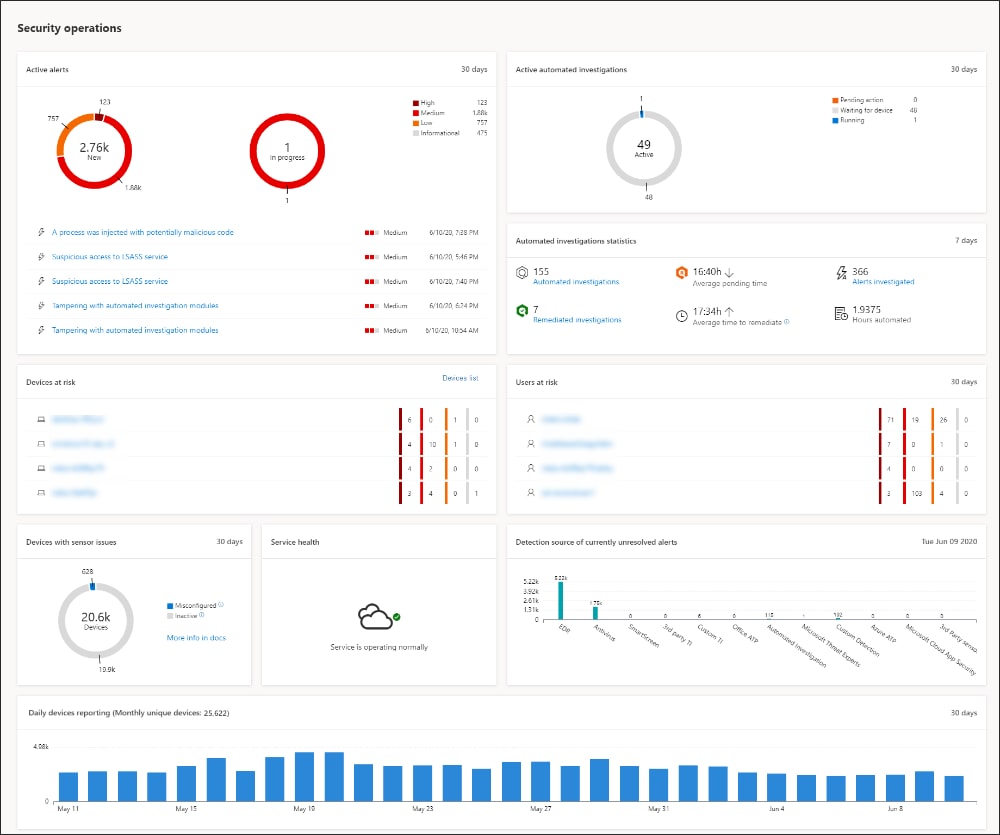
Netify Cybersecurity Rating: 5/5
Bitglass Cybersecurity Solution
Bitglass is a leading provider of cloud security solutions including CASB, SWG and ZTNA. They are now a Forcepoint company, and when combined with the Forcepoint solution, they offer a comprehensive SASE solution. Organisations looking for a single platform to secure remote workers from threats and enable Zero Trust Access to any application and endpoint without legacy VPN infrastructure should consider Bitglass (and Forcepoint). They also standout as one of the few solutions that can secure bring-your-own-device (BYOD) devices without requiring an agent. The solution can be integrated with other leading security products (for example, endpoint security products like CrowdStrike and Bitdefender) for advanced threat protection covering attack surfaces beyond the cloud environment. Additionally, Bitglass offers on-device proxies to enable inspection and visibility while reducing impact to performance.
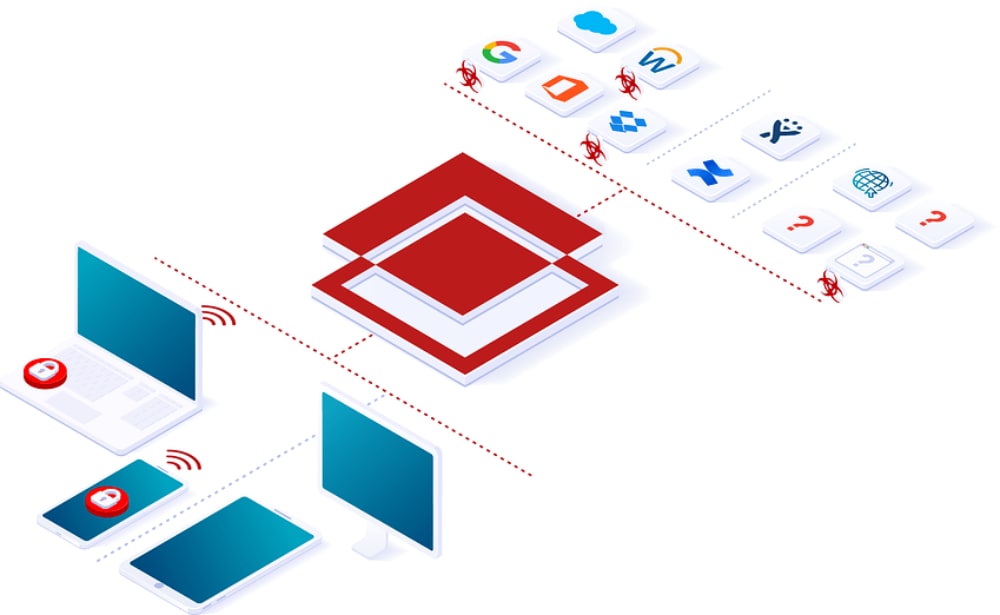
Netify Cybersecurity Rating: 4/5
Akamai Cybersecurity Solution
Akamai is a leader in content delivery and cyber security. Their secure service edge solutions boast advanced features and high detection rates. Akamai’s CDN roots allow them to offer one of the most reliable solutions on the market for Zero Trust. Their SIEM integrations, protection from known and unknown attacks, and unparalleled uptime make them an attractive solution for organisations with vast amounts of geographically-dispersed data that need to be made securely available to insiders and public audiences. The user interfaces are intuitive and the solution is simple to deploy, while their solution is highly scalable and efficient to reduce data transfer costs as well. Finally, management of most features in their fully cloud-based platform are available via API which allows DevOps organisations to tailor the platform to their applications and specific business needs. Akamai’s reliability, scalability, and performance position them as a viable and comprehensive cybersecurity solution provider for enterprises across most verticals.
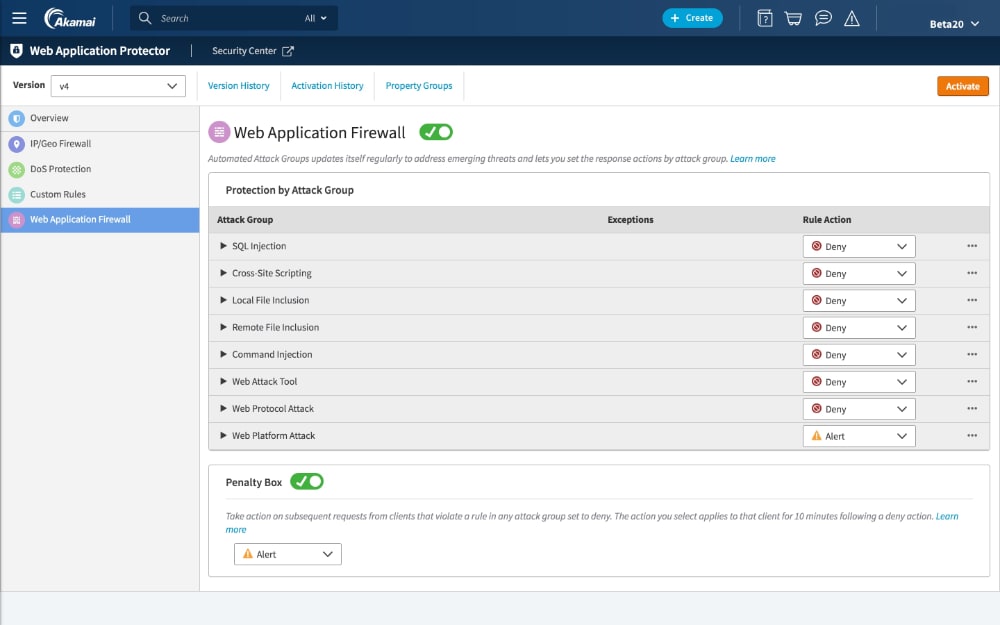
Netify Cybersecurity Rating: 4/5
Conclusion
It’s clear to see that hot topics in today’s cybersecurity threat landscape include data protection, advanced threat detection, and secure remote access - which is now more important than ever with the global shift to remote work following the COVID-19 pandemic. There are plenty of strong vendors in the marketplace, with each taking a unique approach to solving the same sets of problems. While some are niche or point solutions with completely unique features (like Extrahop’s NDR solution, for example), larger vendors who offer a comprehensive SASE solution offer varying implementations and deployment methods for a common set of security controls. As a CISO, it is important to know what cybersecurity problems are most important to our business and why. Once you understand the problems you need to solve, you’ll be well prepared to shop for the right solution or mix of solutions that will help you take security to the next level in your organisation.

Robert Sturt is a leading expert in SD-WAN and enterprise network solutions with extensive experience in telecommunications and network infrastructure. As a Forbes Business Council member and contributor to TechTarget, he provides strategic insights on network transformation and digital connectivity solutions. His expertise spans SD-WAN implementation, network security, and enterprise digital transformation initiatives.
Fact-checked by: Harry Yelland - Cybersecurity Writer, Netify
FAQs
How are the cybersecurity scores calculated?
The Netify Cybersecurity Rating System:
5 stars, each representing one of the top five attacks from the Center for Internet Security (CIS) Community Defence Model (CDM) v2.0:
- Malware
- Ransomware
- Web Application Hacking
- Insider Privilege and Misuse
- Targeted Intrusions
If a solution has a security control for defending against a given attack (i.e. Proofpoint’s e-mail security solution can defend against malware), it gets a star.
If a solution can enable a third-party security control to defend against a given attack but can’t do so on its own (i.e. an SWG can enable inspection for malware but another solution may be required to enable detection) , it gets ½ star.
If a solution has no security control for defending against a given attack, it doesn’t get a star.
